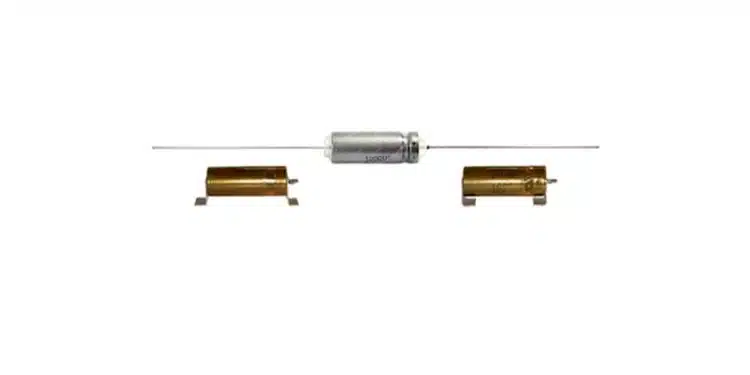Vishay STH / Wet SuperTan® series of hermetically sealed tantalum capacitors have been qualified to meet military H-level shock and vibration capabilities for high reliability at a low cost.
Vishay Intertechnology, Inc. announced the release of a new series of wet tantalum capacitors with hermetic glass-to-metal seals. For avionics and aerospace applications, the STH electrolytic capacitors provide all the advantages of Vishay’s SuperTan® extended series devices while offering a higher reliability design for improved military H-level shock (500 g) and vibration (sine: 80g; random: 54 g) capabilities and increased thermal shock up to 300 cycles.
By providing military H-level performance in a SuperTan® series, the devices released today offer a lower-cost alternative to Hi-Rel wet tantalum capacitors while ensuring the high reliability required by more aggressive mission profiles. The STH series is optimized for energy storage in power supplies, actuators, transponders, and radio, radar, and missile systems, in addition to oil drilling and underwater equipment.
The devices feature high capacitances from 470 µF to 1500 µF in the D case code and capacitance tolerances of ± 20 % standard at 120 Hz and + 25 °C, with tolerances of ± 10 % available. The STH series operates over a temperature range of – 55 °C to + 85 °C, to + 125 °C with voltage derating, and provides low ESR down to 0.50 Ω at 120 Hz and + 25 °C. The capacitors feature standard tin / lead (Pb) terminations, with RoHS-compliant 100 % tin terminations available.
Features
- Enhanced performance, high reliability design
- Terminations: axial, standard tin / lead (SnPb), 100 % tin available
- Model STH tantalum-case electrolytic capacitors provide all the advantages of Vishay’s SuperTan® extended series devices, while offering improved vibration capability
- Increased thermal shock capability of up to 300 cycles
- Designed for the avionics and aerospace applications
- RoHS / lead (non-RoHS) options available































